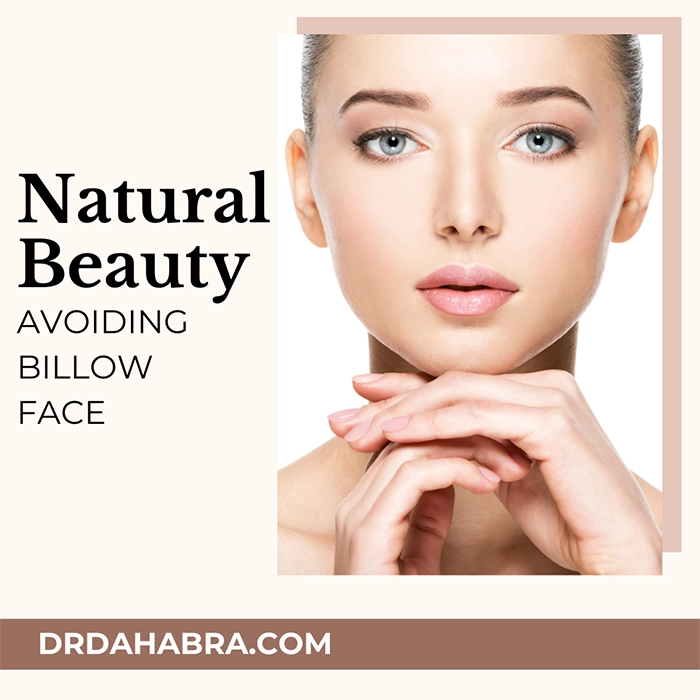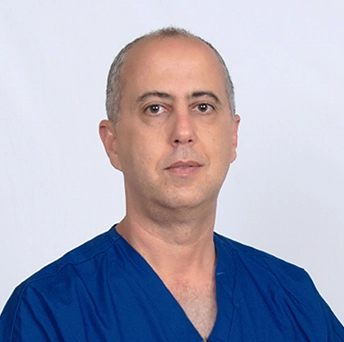Pillow Face Prevention: The Ultimate Guide to Natural-Looking Fillers
What Exactly Is “Pillow Face” Syndrome? And Why Does “Pillow Face” Happen in Cosmetic Treatments?
“Pillow face” is a term used to describe a puffy or overly swollen facial appearance following cosmetic filler treatments. This article is about beauty without distortion by avoiding “Pillow Face”: the art and science of natural‑looking fillers.
It’s not just about looking full, it’s about looking unnaturally bloated, especially in the cheeks, under the eyes, and around the mouth. This effect often stems from excessive amounts of dermal filler or incorrect placement that disrupts the face’s natural contours.
The most common culprits are hyaluronic acid fillers, especially when used aggressively or layered without allowing previous treatments to settle fully.
These fillers are designed to restore volume, but when too much is added, the result can be facial distortion instead of rejuvenation. The issue is more noticeable in individuals with thinner skin or more delicate bone structure.
In essence, “pillow face” reflects a disconnect between aesthetic goals and the execution of treatment. It’s a reminder of why understanding facial aging and achieving facial harmony matters more than chasing volume.
Subtle aesthetic enhancements, rather than dramatic overhauls, should be the goal.
Table of Contents
1. Are All Fillers Capable of Causing “Pillow Face”?
2. How Can You Recognize the Early Signs of Overfilling?
3. What’s the Difference Between Swelling and “Pillow Face”?
4. How Can You Choose the Right Injector to Avoid “Pillow Face”?
5. What Questions Should You Ask Your Aesthetic Provider Before Treatment?
6. What Role Does Gradual Treatment Play in Achieving Natural Results?
7. How Can Cheek Fillers Be Applied Without Creating a Puffy Look?
8. What’s the Secret to Natural‑Looking Lip Augmentation?
9. How Can Under‑Eye Fillers Avoid the “Bulging” Effect?
10. Is It Possible to Treat Nasolabial Folds Without Overfilling?
11. How Do Temple Fillers Contribute to Overall Facial Harmony?
12. How Do Lifestyle Factors Impact the Longevity and Look of Fillers?
13. Can “Pillow Face” Be Reversed, and How?
14. Are There Non‑Surgical Ways to Reduce a Puffy Appearance from Fillers?
15. Frequently Asked Questions (FAQs)
16. Conclusion
17. References
1. Are All Fillers Capable of Causing “Pillow Face”?
Not all fillers carry the same risk of creating a “pillow face” look.
Hyaluronic acid fillers are most commonly associated with this issue, mainly because they’re widely used for volume restoration and have the potential to absorb water after injection. However, any filler, when misused, can contribute to this overdone appearance.
Specific fillers have thicker consistencies and are designed for deeper injection, making them more prone to puffiness if placed too superficially. On the other hand, softer, more flexible fillers tend to blend better with natural tissue and are preferred for subtle corrections.
Choosing the wrong type for a particular area is a big reason why facial filler complications arise.
Ultimately, the filler itself is just a tool; it’s the injector’s skill and understanding of the face that determines the outcome.
With the right filler type, proper injection depth, and conservative volume, it’s possible to avoid overfilled faces and enjoy long-lasting filler results that still look natural.
2. How Can You Recognize the Early Signs of Overfilling?
Spotting the early signs of overfilling can save you from developing a full-blown “pillow face.”
One of the first things people notice is a loss of facial definition. If your cheekbones or jawline start to blur or appear rounded in photos, that’s often an early warning sign.
Another sign is when facial expressions feel restricted or unnatural. You may find it harder to smile fully or notice a persistent feeling of heaviness in your face.
Swelling that doesn’t settle within a couple of weeks or that looks uneven can also be a red flag.
Listening to your instincts is important. If something feels off, trust it.
Many patients report looking “too different” or like a “puffy version” of themselves when overfilled. Catching these changes early means corrective filler procedures can be done more effectively, often avoiding the need for complete dissolving.
3. What’s the Difference Between Swelling and “Pillow Face”?
Post-filler swelling is entirely normal; it’s your body’s natural response to the injections.
It typically appears within 24 hours and subsides within one to two weeks. It may feel tender, and areas like the lips or under-eyes can look extra full at first.
“Pillow face,” on the other hand, is not a condition that involves swelling. It’s the result of too much filler accumulating in the wrong places or being repeatedly layered over time.
Unlike swelling, it doesn’t go away on its own and usually requires intervention. If your new look still feels too puffy a month after treatment, that’s a clue it might be more than just temporary swelling.
Understanding this difference helps you track your progress and monitor your healing. Knowing when to be patient versus when to seek advice can prevent permanent changes and ensure your path toward graceful aging remains smooth and satisfying.
4. How Can You Choose the Right Injector to Avoid “Pillow Face”?
Choosing a qualified injector is the most critical step in avoiding a “pillow face.”
Look for a dermatologist or plastic surgeon with board certification in dermatology or plastic surgery, who specializes in facial anatomy and has extensive experience with dermal fillers. Aesthetic treatment is part art, part science, and not all injectors are equal.
Ask to see before-and-after photos of their actual patients, especially those who’ve had treatments in areas prone to puffiness. A skilled injector will prioritize facial harmony and subtle enhancements over volume for its own sake.
They should be willing to say no when more filler isn’t necessary.
A good injector will also educate you. They’ll explain risks, such as filler migration or facial filler complications, and discuss long-term outcomes openly.
That level of transparency fosters trust, enabling you to make informed and empowered decisions about your non-surgical beauty treatments.
5. What Questions Should You Ask Your Aesthetic Provider Before Treatment?
Before your first injection, come prepared with a few key questions.
Start with: “What is your approach to avoiding the overfilled look?”
This question helps you determine whether your provider prioritizes natural-looking fillers or prefers a more aggressive style.
Next, ask about their experience with corrective filler procedures. It’s important to know they can handle complications if something goes wrong.
Also inquire about filler dissolving options and how they manage post-filler swelling. A provider who discusses both the benefits and risks demonstrates a genuine concern for your long-term satisfaction.
Lastly, ask what they would recommend specifically for you. Avoid cookie-cutter answers. Your face is unique, and your treatment plan should reflect that.
This is how you ensure your aesthetic treatment guide aligns with your personal beauty goals.
6. What Role Does Gradual Treatment Play in Achieving Natural Results?
Gradual treatment is the secret sauce to natural-looking fillers.
Instead of going all-in at once, spreading out your filler sessions lets your injector fine-tune the outcome. You have the opportunity to evaluate your look and make adjustments based on how your face responds.
This approach also minimizes the risk of facial distortion. It gives tissues time to adapt and reduces the chance of swelling or filler migration.
Plus, gradual enhancements are easier to reverse or tweak than a massive change done all at once.
Think of it like layering makeup: small amounts, when blended ideally, create a thin, subtle effect rather than a thick, apparent swipe. The same logic applies to fillers.
Slow, thoughtful treatments help you avoid the “pillow face” trap and stay true to your natural beauty.
7. How Can Cheek Fillers Be Applied Without Creating a Puffy Look?
Cheek fillers are excellent for lifting and contouring, but they’re also a common culprit in “pillow face.
The key is placement. Instead of injecting directly into the front of the cheek, a skilled injector targets the outer and upper cheekbone area for a more sculpted look.
Less is more here. The goal isn’t to inflate the face but to support it subtly.
By mimicking the natural structure of youthful cheeks, injectors can enhance volume without adding bulk. This approach prevents an unnatural, bloated look and promotes a graceful aging effect with fillers.
Also, avoid chasing symmetry to perfection. Our faces aren’t naturally symmetrical, and trying to force them to be with filler often leads to overcorrection.
Strategic enhancement beats overfilling every time.
8. What’s the Secret to Natural‑Looking Lip Augmentation?
Natural-looking lip filler starts with understanding proportions.
Your top and bottom lips should have a balanced ratio, usually with the bottom lip being slightly fuller. Over-inflated upper lips are a quick path to the dreaded “duck look.”
Skilled injectors use small amounts of filler with precision, often placing it in layers across sessions. This gradual approach builds shape and hydration while preserving your natural lip movement and expressions.
No one wants frozen or stretched-out lips.
The type of filler matters too. Softer, more flexible hyaluronic acid fillers are ideal for the lips because they mold well with the surrounding tissue, resulting in a natural-looking appearance.
When done right, lip filler enhances your overall appearance; it doesn’t draw attention to itself.
9. How Can Under‑Eye Fillers Avoid the “Bulging” Effect?
The under-eye area is delicate, and filler placement here requires finesse. The “bulging” effect typically occurs when thick fillers are injected too close to the skin’s surface, or when swelling isn’t managed adequately after treatment.
Choosing the right filler is crucial. Lightweight, smooth hyaluronic acid fillers designed for tear troughs are ideal.
They settle more naturally into the area and help avoid that puffy, tired look. Some injectors even opt for microdroplet techniques to spread the product evenly.
Another tip?
Avoid treating the under-eye in isolation. Supporting areas like the mid-cheek can improve the overall contour and reduce the need for heavy under-eye correction.
This method supports achieving facial harmony and prevents that “overfilled shelf” look.
10. Is It Possible to Treat Nasolabial Folds Without Overfilling?
Yes, treating nasolabial folds (the lines that run from the nose to the corners) doesn’t have to mean overloading them with filler.
Directly filling these folds too heavily is one of the fastest ways to end up with a “pillow face” or distorted smile lines.
The best approach often involves supporting the midface first. By restoring volume in the cheeks and temples, the skin naturally lifts, softening the appearance of the folds.
This technique creates a more balanced and youthful contour without drawing attention to the filler itself.
Subtle aesthetic enhancements, rather than direct attacks on problem areas, produce better long-term results. With a skilled hand and a holistic approach to facial aging, nasolabial fold treatments can be both practical and naturally beautiful.
11. How Do Temple Fillers Contribute to Overall Facial Harmony?
Temple fillers might not be the first thing you think of, but they play a significant role in facial harmony.
As we age, the temples can hollow out, resulting in a skeletal or tired appearance that disrupts the facial proportions. Restoring volume here lifts and frames the upper face beautifully.
When temples are correctly filled, they improve the transition between the forehead and cheeks. This creates a soft, youthful contour that enhances everything from the brow to the jawline.
It’s an often-overlooked area that can make a big difference when treated correctly.
However, as with any area, moderation is key. Too much volume in the temples can create a protruding look that adds bulk instead of elegance.
A light touch with the right product preserves facial balance while supporting natural, non-surgical beauty.
12. How Do Lifestyle Factors Impact the Longevity and Look of Fillers?
Your lifestyle plays a massive role in how your fillers settle, how long they last, and whether complications like “pillow face” develop.
For instance, poor hydration can make fillers appear lumpy, while smoking accelerates breakdown and dulls the skin. Even chronic stress impacts your skin’s response.
Exercise is another significant factor; high-intensity training increases metabolism, which may cause fillers to dissolve more quickly.
While staying active is beneficial, being mindful of the timing and intensity after treatment can help preserve long-lasting filler results.
Alcohol, diet, sun exposure, and sleep all contribute to how your face handles filler. Avoiding inflammatory foods, using sunscreen, and sleeping on your back (instead of your face) are minor lifestyle tweaks that protect your investment and prevent post-filler swelling and migration.
13. Can “Pillow Face” Be Reversed, and How?
Yes, the good news is that “pillow face” is usually reversible, mainly when caused by hyaluronic acid fillers. The most common solution is hyaluronidase, an enzyme that safely and quickly dissolves unwanted filler, often within hours or days.
Corrective filler procedures, such as dissolving, require a skilled injector who understands facial structure and symmetry. It’s not just about removing volume, it’s about restoring your face’s natural balance.
Sometimes, a touch-up with a different filler or approach is needed after dissolving to maintain structure.
Emotionally, reversing filler can be tough, especially if you’ve lived with the puffiness for a while. However, most patients experience immediate relief upon seeing their features again.
It’s a powerful reminder that less truly is more when it comes to graceful aging fillers.
14. Are There Non‑Surgical Ways to Reduce a Puffy Appearance from Fillers?
Absolutely.
While dissolving is the most direct option, non-surgical techniques are also available to help reduce the puffy appearance caused by fillers. Lymphatic drainage massages can help relieve fluid retention, particularly in areas prone to post-filler swelling, such as the under-eyes and cheeks.
Topical products containing caffeine, green tea, or anti-inflammatory ingredients can help temporarily tighten the skin. Tools like jade rollers or gua sha stones can gently promote circulation and drainage when used consistently and correctly.
For longer-term puffiness or filler migration, treatments such as radiofrequency skin tightening or ultrasound therapy may be beneficial. These approaches don’t dissolve filler but can reduce tissue inflammation and improve skin tone, resulting in a more defined and refreshed look without the need for additional injections.
15. Frequently Asked Questions (FAQs) about Beauty without Distortion by Avoiding “Pillow Face”: The Art and Science of Natural‑Looking Fillers
Q1. How Does Understanding Facial Anatomy Prevent Overfilling?
Concise Answer: Understanding facial anatomy enables injectors to place fillers accurately and minimize puffiness.
Detailed Answer: A deep understanding of facial anatomy is essential for any injector because it ensures that fillers are placed in areas that support natural facial structure rather than distort it. When fillers are injected too superficially or into areas that don’t need volume, they can cause unnatural bulges or “pillow face.”
By targeting specific fat pads, muscles, and bone structures, experienced providers can achieve subtle enhancements that harmonize with your natural features and avoid facial filler complications.
Q2. Are There Specific Filler Types That Are Less Likely to Cause “Pillow Face”?
Concise Answer: Yes, softer hyaluronic acid fillers are generally safer for natural results.
Detailed Answer: Certain fillers are specifically designed to integrate smoothly with the skin and surrounding tissues, thereby reducing the likelihood of causing bulkiness. Softer hyaluronic acid fillers, such as those formulated for delicate areas like the under-eye area or lips, tend to create more natural-looking effects.
On the other hand, thicker fillers meant for deeper injection can cause puffiness if misused. Always ask your provider about the type of filler they’re using and why it’s chosen for your specific treatment.
Q3. What Role Does Skin Quality Play in Avoiding “Pillow Face”?
Concise Answer: Healthy skin supports fillers more effectively and reduces the risk of unnatural-looking results.
Detailed Answer: Skin with good elasticity and hydration adapts more naturally to fillers, allowing for smoother integration and a balanced appearance. If your skin is thin, sagging, or dehydrated, it may not hold filler well, leading to uneven or overfilled results.
That’s why many providers recommend skincare routines or treatments to improve skin health before getting dermal fillers. Think of it as prepping the canvas before painting; healthy skin leads to better, longer-lasting filler outcomes.
Q4. How Can You Maintain a Youthful Appearance Without Constant Injections?
Concise Answer: Incorporate occasional fillers with a balanced skincare routine and a healthy lifestyle.
Detailed Answer: You don’t need constant touch-ups to maintain a youthful appearance. Overdoing it is what leads to “pillow face.”
Instead, aim for subtle aesthetic enhancements when needed and focus on good skincare, sun protection, hydration, and a healthy diet. Non-invasive treatments, such as microneedling, laser therapy, or skin-tightening facials, can complement filler results and help you maintain a fresh, natural look in the long term.
Q5. What Are the Long-Term Effects of Dermal Fillers on Facial Tissues?
Concise Answer: Repeated filler use may stretch tissues or cause buildup over time.
Detailed Answer: While fillers are generally safe, using them excessively or too frequently can cause the skin and underlying tissues to stretch. Over time, this may result in a “puffy” or sagging appearance, even after the filler has dissolved.
Some people also experience filler migration or buildup if areas are repeatedly treated without letting the previous product fully settle or dissolve. That’s why gradual treatment and spacing out sessions are essential to support graceful aging and avoid complications.
Q6. What Are the Potential Risks of Dissolving Fillers?
Concise Answer: Dissolving fillers can cause swelling, bruising, or uneven volume loss.
Detailed Answer: While hyaluronidase injections are effective for dissolving hyaluronic acid fillers, they aren’t without risks. Some patients experience temporary swelling, tenderness, or minor bruising.
There’s also the possibility of removing too much filler or losing volume in areas you still liked. That’s why it’s crucial to visit an injector experienced in corrective filler procedures; they know how to strategically dissolve and maintain a natural look safely.
Q7. How Long Does It Take for Dissolved Fillers to Show Results?
Concise Answer: Most people see results within 24 to 72 hours after dissolving.
Detailed Answer: Hyaluronidase typically works very quickly. You’ll usually notice a difference within a day, with continued improvement over several days as the swelling subsides and the product is fully absorbed.
In some cases, especially with dense fillers or large quantities, a follow-up treatment may be required. Be patient, full resolution can take up to a week or more, depending on your body and the type of filler used initially.
Q8. What Are the Psychological Impacts of “Pillow Face” and How to Cope?
Concise Answer: It can cause stress and insecurity, but correction helps restore confidence.
Detailed Answer: Many people feel regret or emotional distress after developing “pillow face,” especially when they no longer recognize themselves. It can affect self-esteem, social interactions, and even cause anxiety.
If you’re struggling, know that you’re not alone and that help is available. Speaking with a qualified injector about reversal options, along with self-compassion and support, can help you get back to feeling like yourself again, both inside and out.
Q9. What’s the Most Common Reason People End Up with “Pillow Face”?
Concise Answer: Excessive filler and suboptimal injector technique are the primary causes.
Detailed Answer: The number one reason for “pillow face” is over-injection, either too much filler at once or over time, without assessing how the face is aging.
Some injectors may also place fillers too close to the surface or in the wrong anatomical areas, resulting in puffiness or a distorted appearance. Always choose a provider who values subtlety and understands the art of achieving facial harmony.
Q10. My Injector Keeps Suggesting More Filler; How Do I Know When to Stop?
Concise Answer: Trust your gut; if it feels too much, it probably is.
Detailed Answer: Some injectors may over-recommend treatments to chase perfection or for financial reasons. You should never feel pressured to keep adding more.
If you look in the mirror and don’t recognize your face or you’re being advised to fill areas that don’t seem lacking, it’s time for a second opinion. A good provider knows when to stop and values your natural beauty over profit.
Q11. What Are Some Subtle Ways to Improve My Face Without Looking “Done”?
Concise Answer: Opt for subtle enhancements, such as cheek contouring or skin hydration.
Detailed Answer: To enhance your look without appearing “done,” focus on treatments that refresh rather than transform. A bit of volume in the mid-cheeks, temple filler for facial balance, or under-eye smoothing can go a long way when done conservatively.
Pair these with skincare treatments like microneedling or peels for a subtle yet impactful glow-up, think fresh, not frozen.
Q12. How Much Filler Is Too Much for a Natural Look?
Concise Answer: If it alters your facial proportions drastically, it’s too much.
Detailed Answer: There’s no one-size-fits-all amount, but a good rule of thumb is that filler should enhance, not alter, your features. Overfilling erases your natural bone structure and soft tissues, making everything look inflated.
A qualified injector will work in small increments and assess your face holistically rather than focusing on a single area. The goal is always subtle aesthetic enhancement, not an entirely new face.
Q13. Can Weight Gain Be Mistaken for “Pillow Face”?
Concise Answer: Yes, mainly if fat accumulates in the cheeks or jawline.
Detailed Answer: Weight gain can add natural volume to the face, sometimes mimicking the appearance of excessive filler. This can especially affect people who already have filler, as the extra fat might push it outward and create puffiness.
Your provider can help assess whether you’re dealing with filler-related swelling or natural fat deposits and advise whether dissolving or waiting is best.
Q14. Is It Possible to Get Natural-Looking Lips Without Looking Like a “Duck”?
Concise Answer: Yes. Skilled technique and the right filler prevent duck lips.
Detailed Answer: “Duck lips” happen when too much filler is injected into the top lip or when it’s placed too far outside the natural lip line. A natural look comes from respecting the natural curves of your lips and adding just enough volume to enhance shape and hydration.
The best results look like you, just with a bit more definition and softness, not like you’ve had “work” done.
Q15. How Do I Find an Injector Who Prioritizes Natural Results?
Concise Answer: Look for a specialist in facial aesthetics who demonstrates subtle work.
Detailed Answer: The best way to find the right injector is through research and consultations. Read reviews, check credentials, and ask to see unfiltered before-and-after photos of patients who’ve had treatments similar to yours.
During your consult, discuss your goals. If they emphasize natural-looking fillers, facial harmony, and less-is-more techniques, you’re likely in good hands. Trust your gut.
If you feel rushed or pressured, take a step back.
16. Conclusion: Beauty without Distortion by Avoiding “Pillow Face”: The Art and Science of Natural‑Looking Fillers
In a world obsessed with perfection, it’s easy to fall into the trap of thinking “more is better.” But when it comes to dermal fillers, the real beauty lies in restraint.
In enhancing what’s already there, not masking it. “Pillow face” isn’t just a cosmetic misstep; it’s a painful reminder of how something meant to empower can sometimes strip us of our most cherished trait, our natural identity.
You deserve to feel confident in your skin without sacrificing your authentic self. Subtle aesthetic enhancements, executed with precision, care, and an understanding of facial harmony, not only preserve your beauty but also amplify it.
They reflect the wisdom of graceful aging, the power of self-awareness, and the joy of feeling like you again when you look in the mirror.
If you’ve ever doubted whether fillers are right for you, or feared losing your natural charm, let this be your permission to take the slower, wiser path.
Choose a provider who sees you, not just your lines.
Trust in the art of subtlety.
Because the best version of you doesn’t need to be overfilled, it just needs to be gently revealed.
We have covered everything about beauty without distortion by avoiding “Pillow Face”: the art and science of natural‑looking fillers.
Beauty without Distortion by Avoiding “Pillow Face”: The Art and Science of Natural‑Looking Fillers
Discover beauty without distortion by avoiding “Pillow Face”: the art and science of natural‑looking fillers with Dr. Dahabra. Why wait to unlock your beauty?
Call us now at (954) 595-2607 or book online. Your journey begins with just a click or a call.
Embrace the beauty, embrace innovation – Embrace You.
17. References
Beverly Hills Wellness Center & Med Spa, Florida
Dynamics of hyaluronic acid fillers formulated to maintain natural facial expression
Journal of Cosmetic Dermatology (PMC)
A pilot study examining how flexible HA fillers preserve natural facial movement and appearance post-treatment.
Enhancing Skin Quality With a Sequential Treatment Using Two Hyaluronic Acid Dermal Fillers
Aesthetic Surgery Journal (Oxford Academic)
A multicenter interventional study on improving skin quality and youthfulness using specific HA gels.
Full Face Tailored Treatments Using Hyaluronan Dermal Fillers
Cosmetics (MDPI)
A review of using HA fillers with different rheological profiles for safe, harmonized full-face enhancement.
Review of the Adverse Effects Associated with Dermal Filler
Diagnostics (MDPI)
An analysis of common complications, including contour irregularity and swelling, associated with volumizing HA fillers.
Complications of hyaluronic acid fillers and their managements
ScienceDirect
A clinical overview of mild to serious HA filler risks (e.g., vascular occlusion) and how to address them.
The rheology of injectable hyaluronic acid hydrogels used as facial fillers
ScienceDirect
A detailed study contrasting synthetic and natural HA fillers based on viscosity and elasticity characteristics.
Complications of Hyaluronic Acid Fillers
EyeWiki
A focused review on ocular and periocular filler complications like malar edema and vascular risks.
Disastrous cerebral and ocular vascular complications after cosmetic filler injections
Scientific Reports (Nature)
Case series highlighting rare but severe outcomes like stroke or retinal artery occlusion from filler use.
The Demographics of Patients With Dermal Filler Complications
Journal of Cosmetic Dermatology (Wiley)
A demographic analysis of who experiences filler complications in a Tehran dermatology hospital.
Injectable Soft Tissue Fillers and Their Use in Facial Rejuvenation
Springer Book Chapter
A comprehensive review on the rise of HA fillers, their safety profile, and best use practices for facial rejuvenation.




